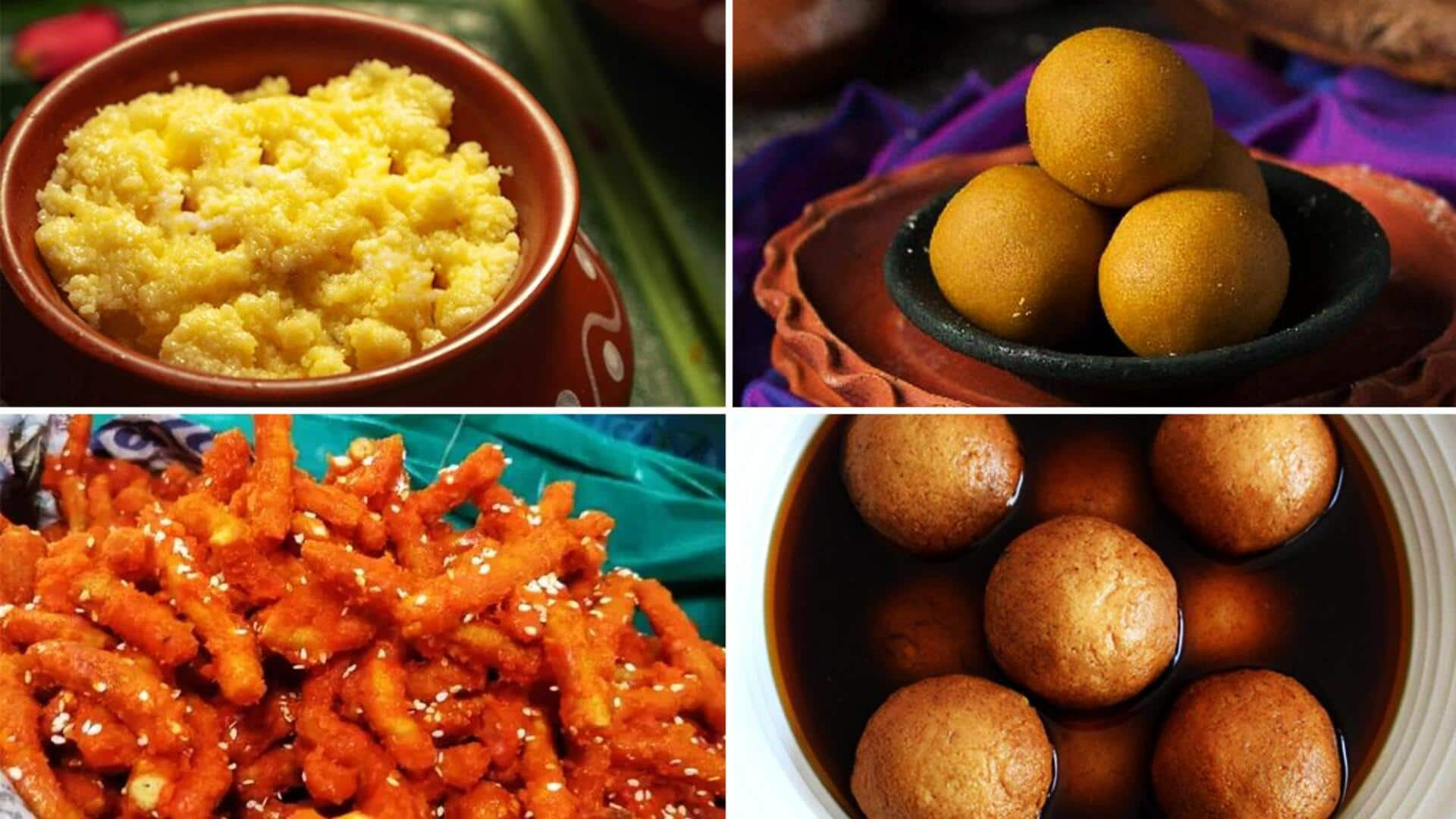
From red ant chutney to khaje, exploring the GI-tagged delicacies
What's the story
Odisha's red ant chutney also known as kai chutney, made with red weaver ants, was recently awarded a Geographical Indication (GI) tag. Created by tribal people in the Mayurbhanj district of Odisha, the red ant chutney is popular for its nutritional value and healing properties. Besides this chutney, there are many more GI-tagged dishes across India that you can relish this winter.
Dish 1
Srivilliputhur palkova
A true sweetmeat from Tamil Nadu, Srivilliputhur palkova is pure milk joy. Before being sweetened with sugar, cow's milk is reduced to the proper consistency for many hours over a slow wood fire. What sets this particular dessert apart is the quality of the ingredients. The higher fat content of the milk in this area contributes to the naturally richer flavor of the sweets.
Dish 2
Bandar laddu
Bandar laddu, also called thokkudu laddu, are native to the state of Andhra Pradesh. These round, delectable delights are crafted from the finest ingredients, including gram flour, ghee, sugar, and a hint of cardamom for that aromatic touch. It is essentially a smoother and creamier version of the standard besan laddu. Despite having its origins in Rajasthan, it is a staple in Bandar.
Dish 3
Nolen gur
The fruit sap of the date palm tree is used to make jhola gur, also known as nolen gur, which is liquid date jaggery. Harvested primarily in West Bengal throughout winter, it has a sticky and gooey texture. Its nutty scent and sweet taste make it a perennial wintertime favorite for preparing a variety of Bengali sweet treats, including payesh, sandesh, and roshogolla.
Dish 4
Khaje
Another addition to the GI list of Indian dishes is khaje, a centuries-old festival confection that is a cornerstone of temple and church feasts in Goa. These are deep-fried finger-sized sticks of gram flour coated in a layer of sesame seeds and ginger-infused jaggery. Its unique flavor comes from a combination of Goan ginger, local salt, and drinkable well water.
Dish 5
Joynagar moa
This delicate Bengali treat is a popular winter delicacy. Hailing from the town of Joynagar in West Bengal, the key ingredient is khejur gur or date palm jaggery, which imparts a distinctive, rich sweetness to the moa. A blend of puffed rice, raisins, and ghee, all enveloped in the warmth of jaggery, results in this confection that is both crunchy and decadently sweet.